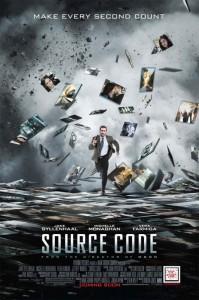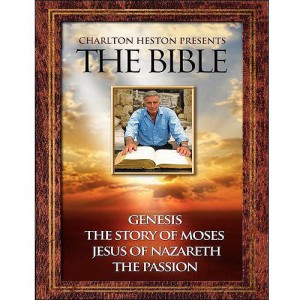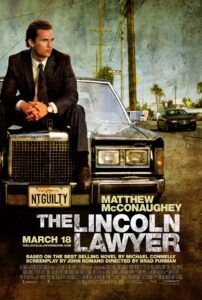Behind the Scenes: Born to Be Wild 3D
Posted on April 11, 2011 at 3:53 pm
 It was so much fun to talk with some of the people behind “Born to Be Wild 3D” following its Washington DC premiere at the Smithsonian’s Museum of Natural History. Writer/producer Drew Fellman, cinematographer David Douglas, and Dame Daphne Sheldrick of the baby elephant rescue in Kenya spoke with me about making the movie.
It was so much fun to talk with some of the people behind “Born to Be Wild 3D” following its Washington DC premiere at the Smithsonian’s Museum of Natural History. Writer/producer Drew Fellman, cinematographer David Douglas, and Dame Daphne Sheldrick of the baby elephant rescue in Kenya spoke with me about making the movie.
3D and Imax requires some pretty extensive equipment — and yet you were able to get some amazing shots of the animals and the scenery. What was your biggest challenge?
Douglas: We had two camera systems. One of them weighs 300 pounds. It’s basically a massive fridge, and it sounds like a sewing machine and it has three minutes of film. So, that camera is used for certain scenes. But to get up in the canopy, to get an orangutan’s view of the world, we basically had to invent a new camera system for IMAX. And so we worked with IMAX to create their first camera that weighs less than 100 pounds, to get up on a 60-foot crane arm, and we build scaffolding in the middle of the jungle. Piece by piece, we trekked it up the river in small boats.
It sounds like “Fitzcarraldo!”
Fellman: I was actually reading Herzog’s book, Conquest of the Useless, his diary of the making of “Fitzcarraldo,” and it was really interesting because you’d read that book and think, “Okay, we’ve got it pretty good.”
Douglas: The shoot was really not just two animal but two challenges. The elephants were almost like a dream in a sense, we could be at ground level, we could get around them and we could use the big camera. But the orangutans, a big camera like that in the jungle is just too unwieldy. That small camera ended up being massively useful.
Fellman: One of the biggest surprises for us was how the animals ended up accepting our presence and the cameras. That was our biggest concern going in. One thing we had in our favor is that if it was between the camera and a bottle of milk, the milk was much more interesting than the camera.
Dame Daphne: They were a little bit suspicious at first, curious about these strange people around them all day who weren’t a part of their human family. But within a couple of days, it just became the norm and they were happy to ignore them and concentrate on what they were doing.
In the movie it says that it took you 24 years to develop infant formula for elephants that made it possible for the first time to raise them without a mother. What did you have to do to get it right?
Dame Daphne: Newborn elephants didn’t come in every day. But whenever they came in very small we tried different formulas. We knew elephant milk was very rich so we tried adding butter, cream, and then no fat at all. We didn’t have access to sophisticated baby formula in those days. We only had access to cow’s milk. I tried skim milk and the calves lasted a lot longer but they just wasted away. So I knew it was a fat problem. I went scouring the shops in Nairobi and all the zoos and asked, “What can we feed an elephant that has no cow’s milk fat?” Eventually, we settled on a base of SMA Goldcap. It’s not ideal. We still get stomach problems. But elephants need milk for the first three years of life. They cannot live without it. When they first come in we have a lot of problems with dehydration, lots of them are wounded or psychologically disturbed and in a mess. Stabilizing the stomach is the main challenge when they come in, getting them onto the new formula and calming them down.
Do you have to teach them about their natural predators so they can protect themselves when they return to the wild?
Dame Daphne: Fortunately for us, unlike the primates, elephants are born with a genetic memory, but in order to hone that, you have to expose them to a wild situation. We’ve learned that the younger we can get them there, the easier the transition is. We can keep them for as long as ten years. Generally, the ones that came to us older, that have the memory of being wild elephants, leave us sooner.
Fellman: There are lions all over that place. It’s part of Nairobi National Park, and the lions were walking around eating the warthogs. These elephants see lions and react to them.
Dame Daphne: The elephants are very fearful animals. They know the lions are there before the keepers do and they will run back to the keepers for protection. They are getting bolder, too.
Fellman: We were on a scouting trip in Tsavo and we were walking with the elephants with their keepers in the bush, and suddenly they stopped. This was a young group, maybe three or four years old. There were maybe three buffalo We didn’t know what to do. We had been told that the buffalo can be quite dangerous. We look at the elephants; the elephants look at us. We look at the buffalo; the buffalo look at us. And the elephants ran to go behind us! We got tossed aside like nothing.
Douglas: We were told to get behind the elephants, that they would protect us. But they had their own idea.
Dame Daphne: In the nursery, the keepers are very much a mother figure for the elephants. But once they get to rehab there’s a gradual change.
Do they ever come back after they go to the wild?
Dame Daphne: Some of the bulls come back, even after eight years One came back with a snare on his leg. He stood very still while we removed it.
Fellman: One scene we could not squeeze into the movie had two that came back. A whole group, maybe twelve, big elephants, brought them back. One had an arrow in his nose and another had an arrow in her rump. The mobile unit came by and treated them and then they went back.
Dame Daphne: One came back with a broken leg, escorted by another “ex-orphan.” The “ex-orphans” come and visit him, just like he’s in hospital. He’s made big friends with the small ones as well; they all have a hero worship on the big guy. They want to be close to him.
 I admire the way you made it clear in the film that these are not pets or domesticated animals but respected fellow creatures.
I admire the way you made it clear in the film that these are not pets or domesticated animals but respected fellow creatures.
Douglas: They weren’t patients, they weren’t study animals; they were friends.
Fellman: The thing that struck me when we started looking at his project is this idea that there’s an enterprise happening between people and animals as equals for a common goal.
Dame Daphne: The elephants are teaching the keepers. There’ve been occasions when one or two of the orphans have been left behind with the wild herds. The keepers are worried. They open up the gates and Yetta, the herd matriarch, sends two young bulls off and off they go to bring back the truants. The scientific community have had this huge block about not attributing human emotion to animals — that is anthropomorphizing. But I just came in as a lay person who loves animals. I could see very early on that all animals indeed have the same sort of emotions. We’re part of the animal kingdom and we’re not nearly as sophisticated as the elephants.
I have one adorable little stuffed orangutan to give to the first person who sends me an email at moviemom@moviemom.com with “Born to Be Wild” in the subject line. Tell me your favorite animal and don’t forget your address!






